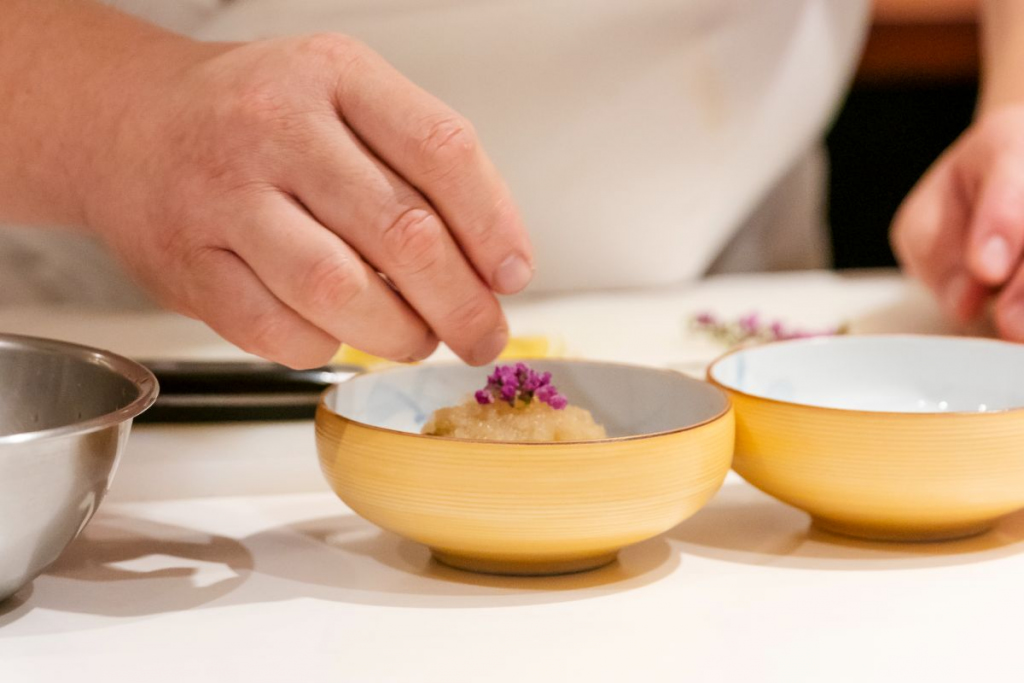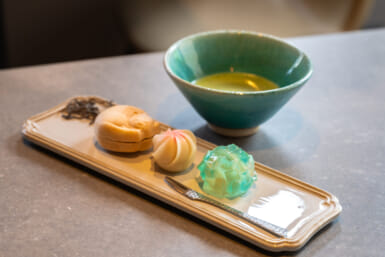Current global food trends include a plant-forward diet, plant-based foods and locavore dining. Some destination restaurants are making radical changes to their menus in order to be categorized as completely vegetarian. Meanwhile, here in Japan there is a rich history of vegetarian cuisine at Buddhist temples called shojin ryori which can be traced back to the 6th century with its foundations established during the Kamakura Period (1185-1333). A traditional shojin ryori meal incorporates vegetables and cooking techniques that have been used for centuries.
Located in the heart of Roppongi is Sougo, a restaurant where chef Daisuke Nomura serves contemporary shojin ryori in a relaxed environment. Nomura earned two Michelin stars at his family’s shojin ryori kaiseki restaurant, Daigo, which is located in nearby Atago. It is now headed by Nomura’s youngest brother. Sougo opened in 2015 because the chef wanted to “reach out to international guests and to younger Japanese” and wants to give diners “healthier, more sustainable food choices.” A brilliant move on his part as at a recent lunch there was a balanced mix of young and old and local and international guests. Many shojin ryori restaurants are usually located in traditional, reserved settings with tatami mats and low tables. Sougo, however, displays a warm contrast with tables, booths and counter seating for about 40 spread out so diners can socially distance. Jazz plays softly in the background.

Nomura, along with chef Yoshihiro Narisawa, are the only Japanese selected for the Plant-Forward Global 50 list of chefs and restaurants who are advancing plant-forward food choices, a list that also includes global culinary heavyweights Alain Passard and Yotam Ottolenghi.
“Japanese cuisine evolved from shojin ryori which is the oldest codified cuisine in Japan,” says the tall, bespectacled Nomura with a boyish smile. “The very basics of the cuisine means that each meal should include go-shoku. Five colors of red, yellow, green, black and white. Go-hō: Five cooking techniques of raw, boiled, grilled, steamed and fried. And go-mi: Five flavors of sweet, sour, salty, bitter and spicy. Actually, shojin ryori also discovered a sixth flavor called tanmi, now recognized as umami.”
A kombu kelp dashi provides an umami-rich base for many of Sougo’s dishes. To the dashi, Nomura includes vegetable cores, stems and skin, an essential mindset of the no-waste philosophy behind shojin ryori. Seasonal fruit and vegetables are used along with items available year-round such as fu wheat gluten, konnyaku and tofu in its multifarious forms.
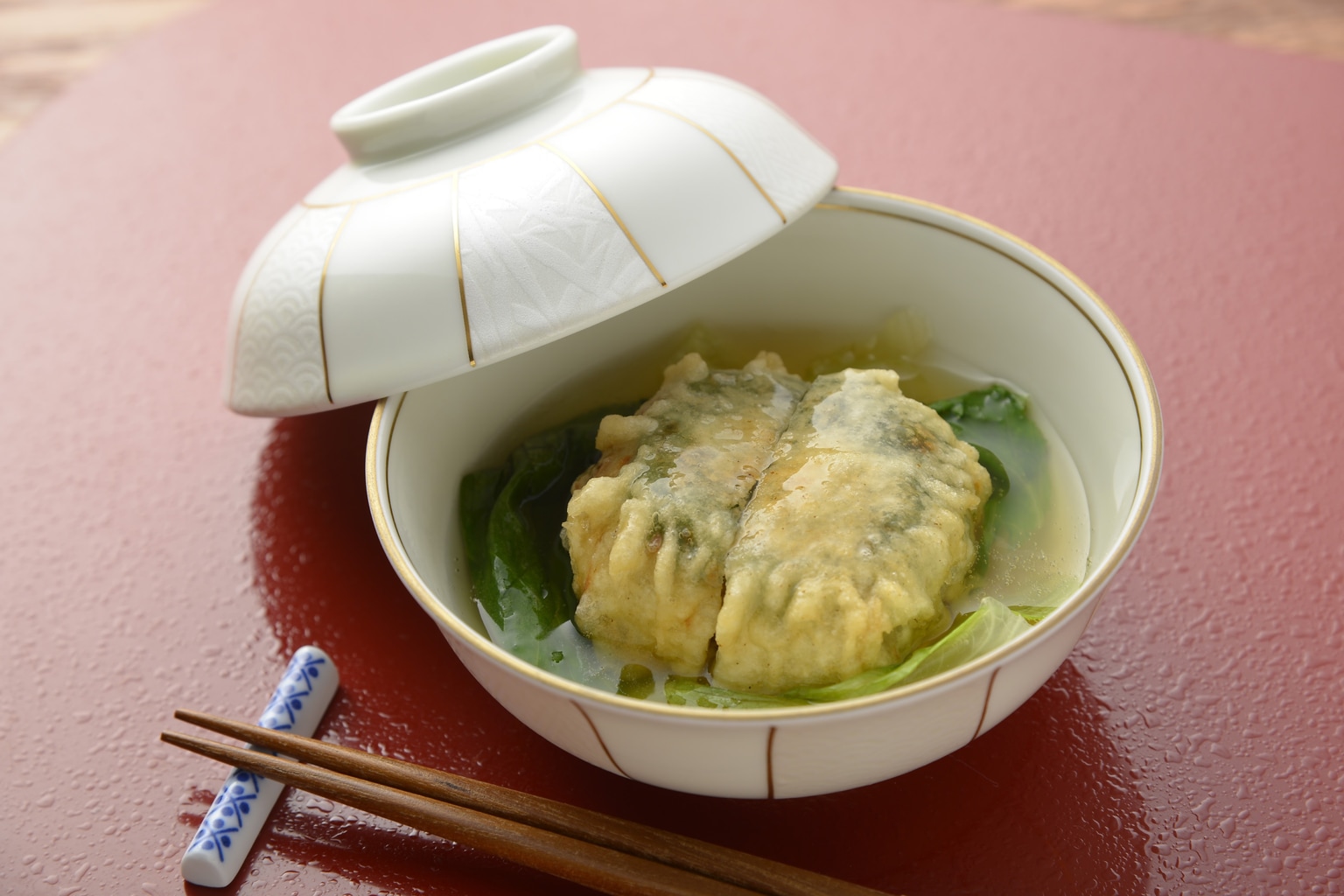
Nomura’s cuisine can be defined as a “new type of shojin ryori” based on traditional shojin ryori with innovative and modern twists. Bread enveloping mochi and a potato salad which is deep-fried before adding it to soup. Hoba yaki miso, a local Gifu Prefecture dish of sweet miso grilled in a Japanese magnolia leaf, traditionally served with wagyu, here is made with sweet potato, konnyaku, tofu, new potato and makomodake, a water bamboo with a texture similar to eringi mushrooms. A highlight of a recent meal was Naruto daikon cut almost paper-thin, spiraled around carrot and burdock root with fried tofu that is battered and deep-fried and served as a nimono (simmered dish). One of Nomura’s signature dishes is goma dofu, a house-made creamy sesame tofu that is traditionally served chilled. Nomura opts to serve it grilled, fried or in a warm soup which encourages new textures.
Nomura works from behind an open counter. Hot food prepared in the back kitchen is brought out to the counter by junior cooks. Nomura assembles the dishes, finishing some with a haystack of julienned ginger or by zesting aromatic yuzu on a grater and brushing it off with a chasen whisk, traditionally used for making matcha. From this perch he can keep his eye on the restaurant and he’s quick to step out to greet guests, take orders and bring food to the tables.
As part of Nomura’s philosophy to share shojin ryori with a wider audience he presents workshops throughout the world. On his travels he finds inspiration using local ingredients. While in California, Nomura cut and semi-dried watermelon to give it a richer texture and made poke, a seasoned sashimi dish. His version, resembling tuna sashimi, was seasoned with sesame oil and shiso.
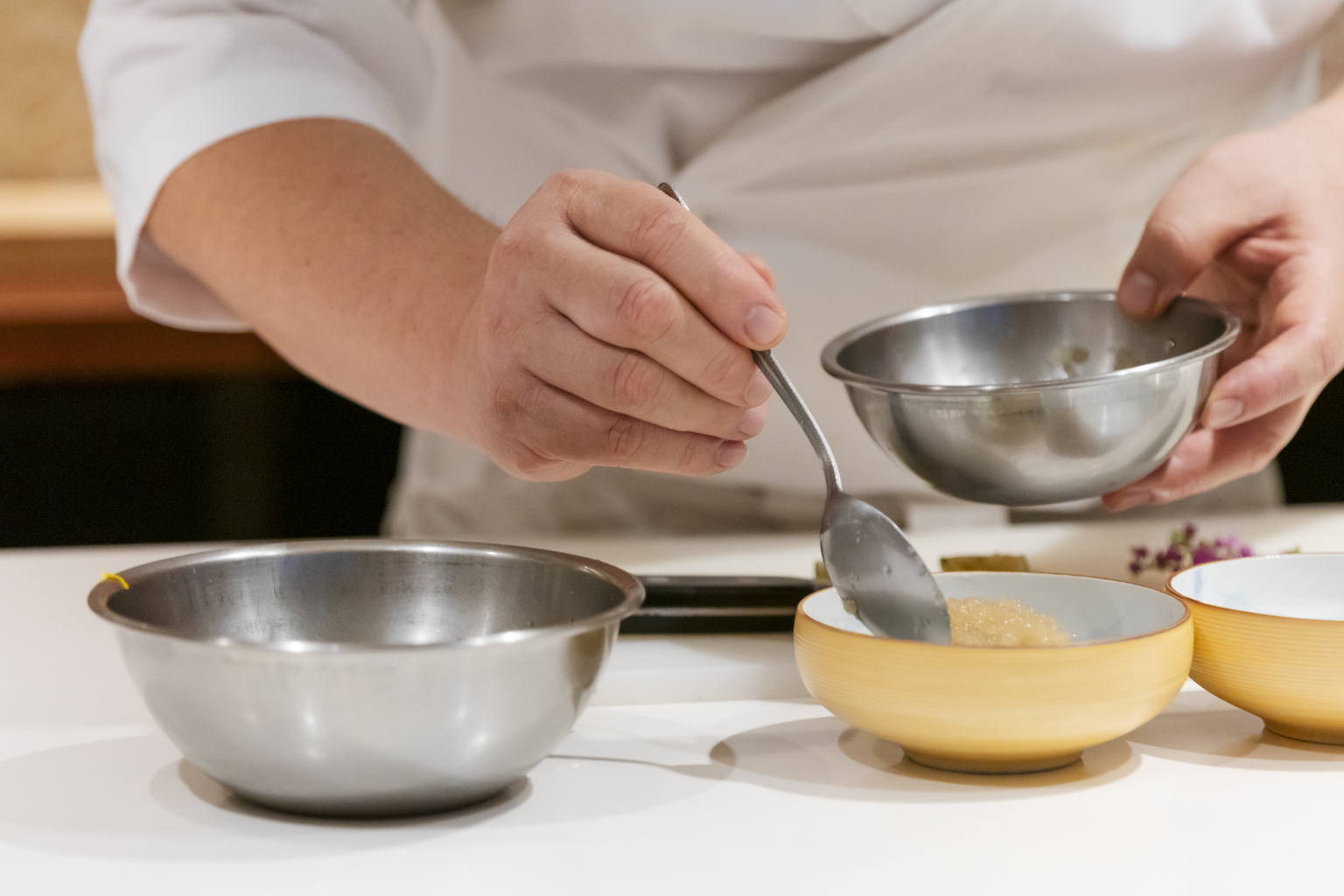
Lunch at Sougo starts at ¥1,430 for a few side dishes, rice, soup and pickles. The multicourse kaiseki, however, starts at ¥9,680. Sougo also offers a takeout bento. The restaurant’s extensive beverage list includes sake, shochu, wine, Royal Blue Tea (a line of high-end teas which are presented in wine bottles) and a comprehensive list of whiskey. There is also a selection of fruit juice and house-made ginger ale.
Some of Sougo’s dishes are made using a dashi broth that includes katsuobushi (smoked skipjack tuna flakes) so they might be incompatible for vegetarian or vegan diners. In the last three years, however, Nomura has been moving towards more encompassing and inclusive shojin ryori menus so it is now possible to order completely vegetarian dishes without advance notice.
Part of the pleasure of dining at shojin ryori restaurants is discovering new ingredients like hishinomi (water caltrop), a nut with a soft texture similar to a chestnut. Nomura also enjoys introducing other, more local, culinary goodies such as kawara ketsumei tea from Shimane Prefecture. The meal ends with this lightly sweet and toasty mame cha tea where the leaves are gently roasted.
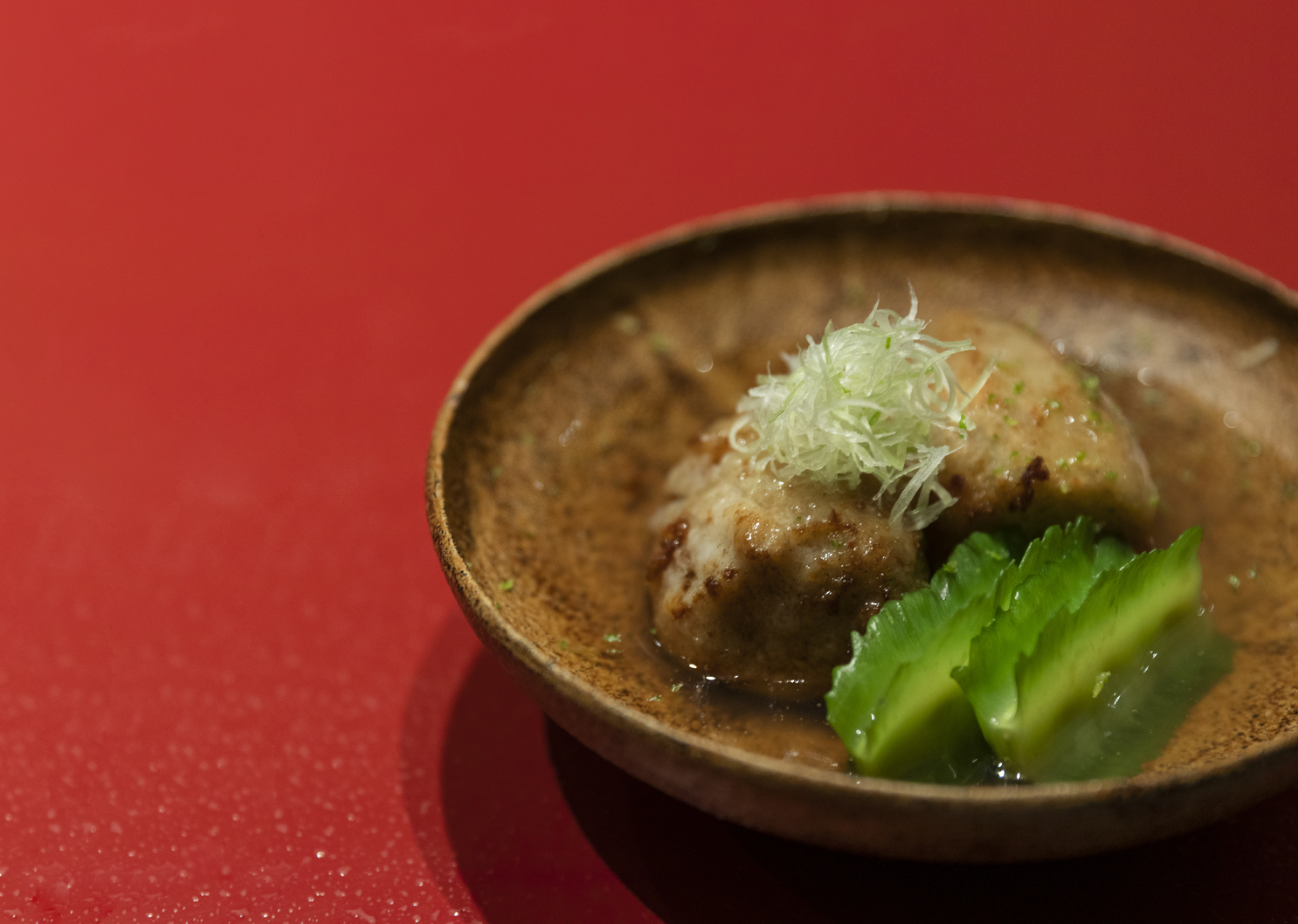
Nomura shared a simple recipe for TW readers to add to their repertoire. This salty, sweet and nutty goma ae sesame dressing for vegetables is particularly moreish.
Combine two parts nerigoma toasted sesame paste (not tahini), one part soy sauce, one part sugar and one part mirin. Mix until combined and dress over blanched vegetables such as broccoli, green beans or spinach. *Note there is alcohol in the mirin so if serving to children the mirin can be heated to cleanse it of alcohol.
Photos by Anna Petek
This article was published in Tokyo Weekender’s Nov-Dec 2021 magazine. Flip through the issue by clicking on the image below.

